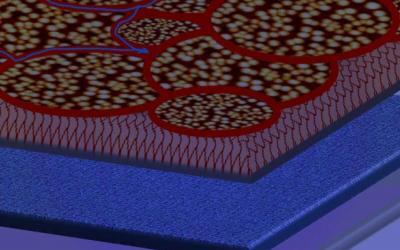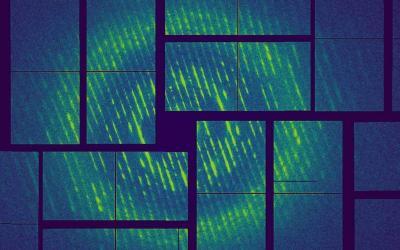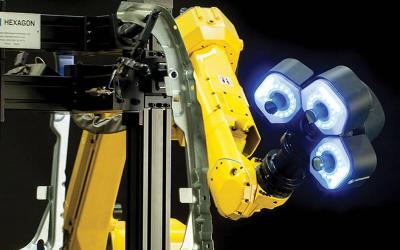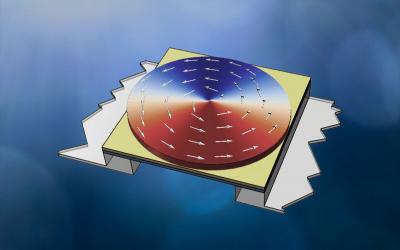Optics Industry News
Get the latest Optics Industry News and optics industry updates below. Cleanroom Connect brings you the latest news from around the world, featuring current topics and optics industry news.
Clean Room Facility Brings 8-Inch Fabrication Capability to Cardiff University
Local business leaders across South Wales attended the launch of the new facility, which offers a range of solutions for companies working to develop 21st century technologies. Guests were able to learn more about the refurbished 225 square metre Clean Room facility and the role it plays in assisting businesses across South Wales as part of CS Connected – the world’s first Compound Semiconductor cluster.
Low Cost Solar Cells for Mass Production
An international team of university researchers today reports solving a major fabrication challenge for perovskite cells — the intriguing potential challengers to silicon-based solar cells. These crystalline structures show great promise because they can absorb almost all wavelengths of light. Perovskite solar cells are already commercialized on a small scale, but recent vast improvements in their power conversion efficiency (PCE) are driving interest in using them as low-cost alternatives for solar panels.
Closing the gap: On the road to terahertz electronics
A team headed by the TUM physicists Alexander Holleitner and Reinhard Kienberger has succeeded for the first time in generating ultrashort electric pulses on a chip using metal antennas only a few nanometers in size, then running the signals a few millimeters above the surface and reading them in again a controlled manner. The technology enables the development of new, powerful terahertz components.
X-ray laser opens new view on Alzheimer proteins
A new experimental method permits the X-ray analysis of amyloids, a class of large, filamentous biomolecules which are an important hallmark of diseases such as Alzheimer’s and Parkinson’s. An international team of researchers headed by DESY scientists has used a powerful X-ray laser to gain insights into the structure of different amyloid samples.
qFLASH-A 3D optical measurement system by Hexagon Manufacturing Intelligence
qFLASH-A is a compact and economical 3D optical measurement system designed for use in smaller automated shop-floor inspection cells. Compatible with a wide range of industrial robots including small-load and collaborative robot systems, qFLASH-A measurement cells have a small footprint and offer an affordable way to automate dimensional data capture for all kinds of part.
New Crystal Discovery has Highest Optical Anisotropy Levels
Place a chunk of the clear mineral Iceland spar on top of an image and suddenly you’ll see double, thanks to a phenomenon called double refraction — a result of a quality of the crystal material called optical anisotropy. Beyond just a nifty trick, materials with optical anisotropy are vital for a variety of devices such as lasers, liquid-crystal displays, lens filters and microscopes.
Harry Potter had Magic. We have Metamaterials.
Metamaterials are artificially engineered materials. Scientists create them by combining multiple elements from composite materials such as metal and dielectric. The result is an entirely new material with properties not found in nature.
Aeolus Satellite Nearing Launch into Atmosphere
Aeolus, A.K.A. Atmospheric Dynamics Mission Aeolus, is an Earth observation satellite built by Airbus Defence and Space that is planned to launch in September 2018. The Aeolus satellite carries a laser for wind measurement. The information collected by the Aeolus Satellite is useful not only for weather forecasting but also to help us better understand atmospheric conditions and climate.
Graphene Electrodes Enable Higher Quality Brain Cell Imaging
Graphene electrodes could enable higher quality imaging of brain cell activity thanks to new research by a team of engineers and neuroscientists at the University of California San Diego. The researchers developed a technique, using platinum nanoparticles, to lower the impedance of graphene electrodes by 100 times while keeping them transparent.
Farthest Individual Star Ever Seen
More than halfway across the universe, an enormous blue star nicknamed Icarus is the farthest individual star ever seen. Normally, it would be much too faint to view, even with the world’s largest telescopes. Through a quirk of nature that tremendously amplifies the star’s feeble glow, however, astronomers using NASA’s Hubble Space Telescope were able to pinpoint this faraway star. They also used Icarus to test a theory of dark matter, and to probe the makeup of a foreground galaxy cluster.
New Magnetic Sensors Prove Better Performance and Accuracy
Magnetic sensors play a key role in a variety of applications, such as speed and position sensing in the automotive industry or in biomedical applications. Within the framework of the Christian Doppler Laboratory “Advanced Magnetic Sensing and Materials” headed by Dieter Süss novel magnetic sensors have been realized that surpass conventional technologies in performance and accuracy in a cooperation between the University of Vienna, the Danube University Krems and Infineon AG.
Joint AFRL-AFIT Research Project Advancement
An AFRL-AFIT Research Project intended to enable more precise imaging of space objects has moved from lab bench testing to field testing at the John Bryan State Park observatory, illuminating night skies with a green laser beam of light. The AFRL-AFIT Research Project is a collaboration between the Electro-Optical Space Situational Awareness Team of the Air Force Research Laboratory’s Sensors Directorate and the Air Force Institute of Technology’s Department of Engineering Physics.
Aerospace News
Optics Industry News and Advancements
The Optics Cleanroom Industry supports the environmental cleanroom and controlled environmental systems for the optics industry. The Optics Industry is the branch of physics that includes the behavior of light and the properties of light. This includes the way that light interacts with matter and the construction of optics instruments, optics products and optics technology that use light or detect light. Light is an electromagnetic wave which is very similar to other forms of electromagnetic radiation, like: x-rays, microwaves and radio waves.
Cleanroom Connect provides the latest Optics Industry News from various Optics Organizations, Optics Industries, and Optics Product Manufacturers. Subscribe today to receive optics news and updates directly to your mailbox.
Modern manufacturing is being revolutionized by the use of optics, which can both improve current manufacturing capabilities and enable new ones. Below are some of the uses of Optics in the industrial and product manufacturing landscapes:
- Light is often used to process or probe materials remotely, sometimes through windows isolating harsh or vacuum environments.
- Light can be used to induce photochemistry, for example, in photolithography to produce submicron features in thin films of photoresist or in rapid prototyping where liquid polymers are solidified by lasers to form a three-dimensional piece from a computer-aided design database.
- Light can cast images, making it possible to inspect a part or use the image to guide the working tool to the correct area of a production piece.
Optics has reached into every aspect of manufacturing and promises to increase in use with improvements in speed, control, precision, and accuracy. Numerous optical techniques are used throughout industry and are critical to the manufacture of such diverse and basic products as semiconductor chips, roads and tunnels, and chemicals. Optical techniques, grouped by function, fall into two broad classes:
-
Performing manufacturing: Light interacts directly with the finished or intermediate product to change its physical properties, as in the case of photolithography or materials processing.
-
Controlling manufacturing: Optics is used to provide information about a manufacturing process, as in the chemical industry’s use of optical sensors for in-line process control, or to inspect a manufactured
Keywords: Optics Industry, Optics News, Optics Industry News, Optics Organizations, Optics Industries, and Optics Product Manufacturers, Optics Research, Optics R&D, Optics Laboratory, Optics Cleanroom, x-rays, microwaves, radio waves












